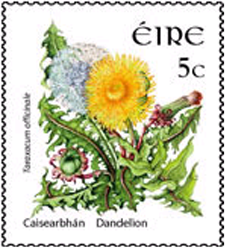Sweden is witnessing a steep fall in red clover Trifolium pratense yield in the wake of an alarming decline in the population of such bumble bee species as Bombus hortorum and Bombus pascuorum. Scientists from the Swedish University of Agricultural Sciences and the University of Lund have discovered that the community composition of bumble bee species and their relative abundances have changed drastically over the last 70 years in Sweden. Over the same period, the average seed yield of red clover has declined and variation in yield has doubled, suggesting that the current dependence on few species for pollination of red clover has been detrimental especially to stability in seed yield.
The study was published this week in the Proceedings of the Royal Society B - Biological Sciences and was provided within the frame of the project STEP - 'Status and Trends of European Pollinators' that is funded by the European Union Framework Program.
The lead author Riccardo Bommarco comments: "It is worrying to see evidence that previously common bumble bee species have become rare and even red-listed. It is possible that such changes in community composition precede extinctions. In our efforts to conserve species and manage ecosystem services is appears important to promote not only species-rich, but also more evenly composed communities of service-providing organisms."
Notable efforts were made from the 1940s to the 1960s to explore pollination and seed production of red clover (Trifolium pratense), which is an important forage crop that is dependent on pollination by bumble bees for seed set. Detailed historic records from the 1940s and 1960s were compared to present data on relative abundances of bumble bee species collected in 2008-2010 in 44 red clover fields across Sweden.
The results show that two species (Bombus terrestris and B. lapidarius) have increased from 40% in the 1940s to entirely dominate present communities with 89%. Other species, such as B. hortorum and B. pascuorum have decreased tenfold in relative commonness, from around 20% to 2% of the observed bumble bees in a flowering clover-field. Notable is also the decline for Bombus distinguendus from 11% to 0.7%. This species is currently listed as near threatened in Sweden.
Sources: MedIndia, 23 June 2011
http://www.medindia.net/mobile/news/news.asp?id=86756
Science Daily, 21 June 2011
http://www.sciencedaily.com/releases/2011/06/110621093306.htm

- Log in to post comments
